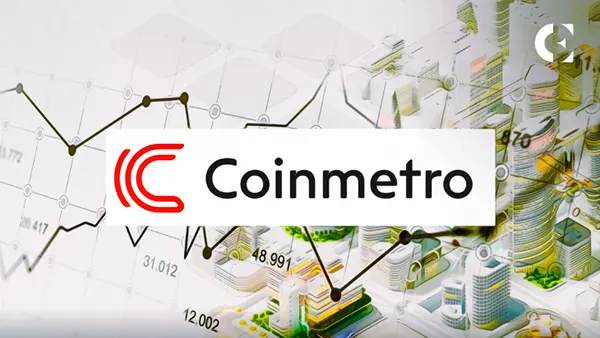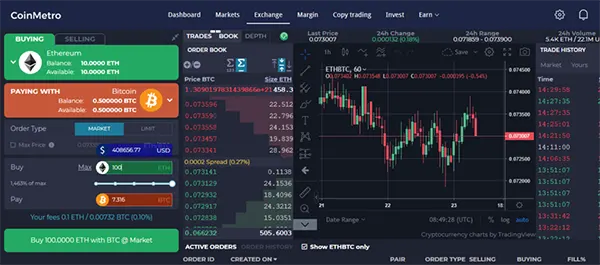
CoinMetro: A European Regulated Exchange Prioritising Security and Real Projects
In the crowded world of digital asset exchanges, CoinMetro stands out as a model of compliance, transparency, and user-focused innovation. Founded in Estonia and regulated under the jurisdiction of the European Union, CoinMetro is not just another trading venue — it’s a long-term partner for those who seek secure access to the crypto economy. Its core values revolve around promoting transparency, offering legally compliant products, and supporting real-world blockchain applications. This article explores how CoinMetro is shaping the market by adhering to EU regulations and prioritising safety, trust, and practicality.
The Regulatory Advantage in the European Crypto Space
CoinMetro’s registration as a Virtual Asset Service Provider (VASP) under the Estonian Financial Intelligence Unit (FIU) is more than a badge — it’s a commitment to operating within a legal framework. In an industry often clouded by uncertainty, CoinMetro has aligned itself with the EU’s evolving cryptocurrency legislation, including the Markets in Crypto-Assets (MiCA) regulation. This compliance ensures not only the legitimacy of its operations but also greater security for retail and institutional clients alike.
The exchange follows rigorous anti-money laundering (AML) and know-your-customer (KYC) procedures. Unlike unregulated entities, it offers peace of mind to users who prioritise accountability. In 2025, as MiCA begins to be enforced, CoinMetro’s early adaptation positions it ahead of the curve. By fostering a secure environment through regulation, CoinMetro attracts serious traders and crypto-curious users who value legitimacy.
Its regulatory standing also opens doors to partnerships with European banks, payment providers, and fintech firms. This enables seamless fiat-to-crypto onboarding and withdrawals, a crucial factor for adoption among traditional financial users.
MiCA, Licensing, and Future-readiness
As the European Union implements MiCA across member states, many exchanges face sudden requirements and operational limitations. CoinMetro, on the other hand, has already built its architecture in accordance with these standards. From asset custody to token listings, its processes reflect the strict principles of transparency, investor protection, and operational soundness laid out by MiCA.
The exchange’s internal policies include risk scoring of assets, legal analysis of tokens prior to listing, and mandatory audit trails. This ensures that every asset available on the exchange meets both regulatory and ethical requirements. Users can access information about project teams, use cases, and legal status of tokens before making investment decisions.
Looking forward to 2025 and beyond, CoinMetro’s proactive stance ensures it can expand into other compliant jurisdictions such as Germany, France, and the Netherlands with minimal friction, giving it an edge in the increasingly regulated crypto environment.
Security as the Foundation, Not an Add-on
For CoinMetro, security isn’t a reactive measure — it’s foundational. The platform incorporates advanced security protocols, including hardware security modules (HSMs), multi-signature wallets, and decentralised custody partnerships. User assets are stored with a strong emphasis on isolation, with only a minimal amount held in hot wallets to maintain liquidity.
In addition to technical safeguards, CoinMetro subjects itself to frequent penetration testing by independent cybersecurity firms. Any discovered vulnerabilities are promptly addressed, and transparency reports are made available to the public. This culture of accountability contributes to user confidence, especially during times of market volatility when safety is paramount.
Account-level protections such as two-factor authentication (2FA), whitelisting, withdrawal time-locks, and session monitoring are all standard offerings. These measures significantly reduce the risk of account compromise and provide users with robust tools for self-protection.
Insurance and User Asset Protection
CoinMetro goes a step further than most competitors by offering coverage for digital assets stored on its exchange. Through partnerships with industry-leading underwriters, it ensures that customer funds remain secure even in the event of catastrophic failure or cyberattack.
While insurance coverage is often limited across the industry, CoinMetro’s model is based on transparency. Terms of the insurance policy are available to users, detailing what is and isn’t covered, and under what circumstances claims may be filed. This level of clarity builds user trust and separates CoinMetro from opaque industry players.
Additionally, user deposits are segregated from operational funds, reducing the risk of insolvency or misuse. These safeguards mirror best practices from the traditional finance sector and are central to CoinMetro’s credibility in the eyes of regulators and clients alike.

Real Projects, Not Hype: A Curated Approach to Listings
CoinMetro adopts a hands-on and highly selective approach when listing assets. Instead of chasing trending tokens with questionable fundamentals, it supports projects with real-world utility and verifiable teams. This includes fintech startups, decentralised finance solutions, and security token offerings (STOs) from regulated companies.
Each token undergoes a comprehensive due diligence process. The team investigates the project’s whitepaper, legal status, tokenomics, team history, and roadmap before approval. As a result, CoinMetro’s marketplace is free from the clutter of meme coins and scam tokens — an issue that has plagued less selective exchanges.
By promoting utility-driven assets, CoinMetro aligns investor interests with long-term growth rather than short-term speculation. Its commitment to listing only what it believes in also fosters closer collaboration with startups, often providing them with advisory services and infrastructure support.
Supporting Innovation Through XCM and Community Involvement
CoinMetro’s native token, XCM, plays a pivotal role in the ecosystem. Unlike many exchange tokens that offer only trading fee reductions, XCM is integrated into multiple layers of the exchange’s services — from staking to yield earning and governance participation. Holders can influence key decisions and product features through community votes.
Furthermore, CoinMetro often leverages its community for early feedback on prospective listings and platform upgrades. This participatory model encourages loyalty and transparency, creating a feedback loop between the exchange and its user base.
In 2025, the roadmap includes further integrations of XCM into tokenised real estate products, DeFi applications, and fiat conversion services, demonstrating the company’s commitment to turning its native asset into a functional financial tool rather than a speculative instrument.
